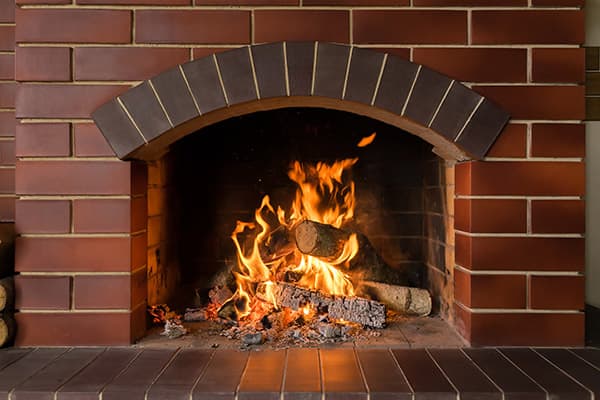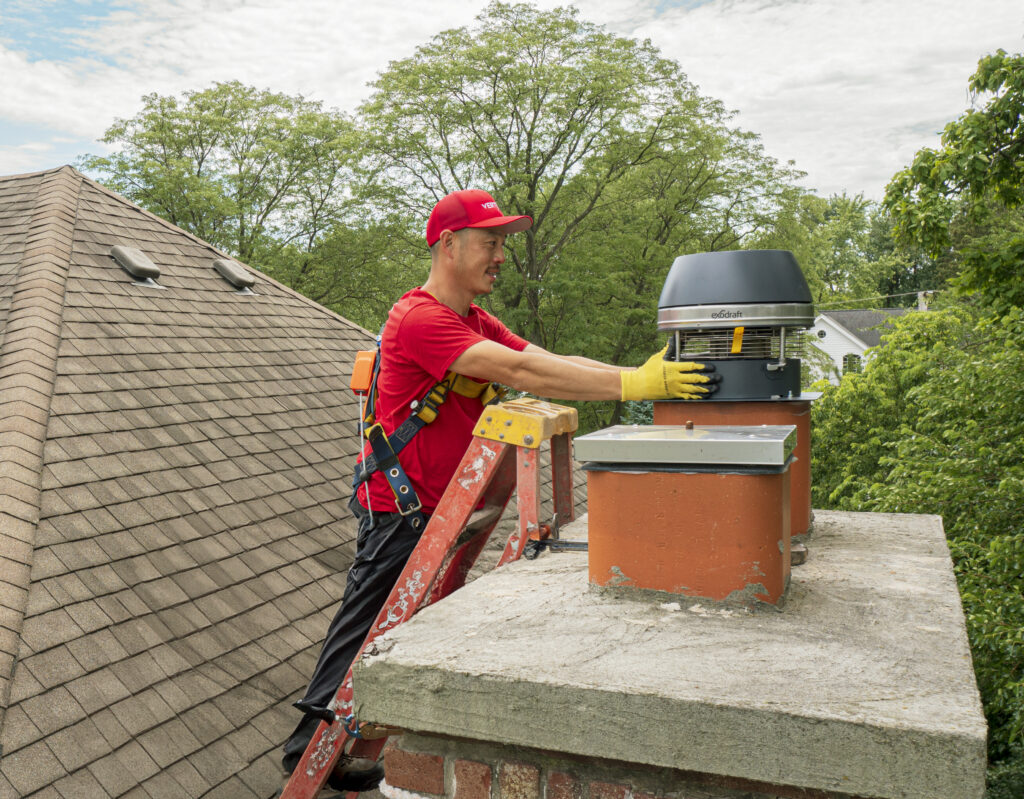
A fireplace is often the most noteworthy piece of decoration in your living room. The large structure stands out due to its size, unique presentation, a symbol of comfort and coziness, and commanding presence.
There are some that opt to paint over the natural brick color of a fireplace. It is always a matter of personal preference, but for some repainting, the bricks help bring the fireplace to life and make it even more appealing.
Painting fireplace bricks may seem like a complicated process, yet it's actually not all that detailed. It is a capable DIY project with approximately a day or two needed to complete. Here is what you need to know about painting fireplace bricks.
Analyze the Fireplace Surround
The surround of a fireplace is generally composed of some type of brick or stone. Brick is the easiest to paint. Rock like sandstone, limestone, or river rock doesn't respond as well to paint, and is generally best left in its natural state.
What type of material is the surround built with? A quick inspection can immediately tell you if repainting the fireplace is even an option, and how much time it's going to take to complete (usually a day).
Fireplace Repainting Colors
After you have inspected the surround, it's time to decide on a new color. White tends to very popular for homeowners that choose to repaint the brick. Red, that closely matches the original shade, is another common selection.
Meanwhile, others like the look of a darker shade such as black or grey, or something that matches the color scheme on the living room walls and baseboard.
The whitewash style is a classic choice, while black or darker shades adds a little drama to the unit.
A common question that homeowners ask is do they need oil-based or latex paint? The answer is that while the primer should be oil-based, once the primer coat is applied latex paint is usually perfectly acceptable. Some may prefer slightly more durable oil-based paint since it will be around extreme levels of heat, though it's not necessary.
What You’ll Need - Tools & Accessories
There are some basic tools and accessories you will need to complete the job. These include:
- Rubber gloves
- Safety goggles
- Wire scrub brush
- Vacuum and broom
- Heavy duty cleaner with non-sudsy trisodium phosphate
- Painters clothes
Painting Materials & Accessories
Before you get too deep into the project, make sure you have the appropriate painting materials and accessories:
- Drop cloths
- Painters tape
- Paint buckets
- A couple of different size paint brushes (stiff-bristle)
- Paint roller designed for textured surfaces (thick knap, 1 ¼ inch)
- Oil-based primer
- Indoor latex paint
Step One: Cleaning & Prepping the Surface
Any great paint job is only as strong as its prep work. Often times in painting projects the prep work is neglected and the overall appearance suffers as a result. So it's important not to overlook the important first step: cleaning and prep.
Fireplaces are remarkably messy units. They collect dust, dirt, grime and a number of other unwelcoming grits to your paint. In order to make sure that the paint adheres and dries properly, you need to take time to thoroughly clean the brick beforehand.
A wire scrub brush can help remove tough dirt and dust that likes to stick to brick. It will take a little elbow grease, but using a wire brush is the most effective way to remove unwanted grime. Before you apply the wire scrub brush make sure that you lay down a drop cloth that you don’t mind getting dirty. It is especially important if you have carpet underneath the fireplace.
Then, apply a non-sudsy trisodium phosphate (also known as a TSP cleaner) to the brick. Trisodium phosphate is a potent chemical so make sure that you wear gloves and safety goggles. It will help keep the chemical off your skin and out of your eyes since splashback will occur as you scrub the cleaner into the rough brick.
After the TSP cleaner is applied rinse it thoroughly then let it dry. While the brick dries up you can begin to prep the rest of the area for the paint. If you have carpet floors, consider vacuuming dust and dirt away from the fireplace surround. If you have hardwood floors, you can also broom the dust away from collecting on the paint where the surround meets the floor.
Lastly, tape off any areas you want to remain paint free such as where the surround meets the floor, or the surround meets the walls.
Step Two: Prime the Brick
You cannot simply apply paint to brick without primer and expect it to last very long. The primer serves a number of important functions for brick.
- It allows the paint to adhere much better to brick.
- It forms a binding layer that is better prepared to accept paint as opposed to the rough surface of brick.
- It protects against future soot stains from the fireplace when it's burning.
There are painting circumstances where using a primer is unnecessary. However, brick is not one of them.
Masonry surfaces are known to have a high pH level which is not ideal for adhesion. The top masonry primers allow you to safely paint over a wide range of pH levels without risking adhesion loss. These primers also help with efflorescence, a type of unsightly white, crystalline deposit that is found on brick and other masonry surfaces. It can help reduce efflorescence in the future.
When shopping for a primer to use on the brick a customer service rep can help answer any questions or concerns. You are generally going to want something that is stain-blocking, as well as oil-based.
There are different types of stain-blocking primers so you should purchase one that is known for being applied to brick and/or fireplaces. The stain-blocking aspect can help keep smoke stains/damage from bleeding through a finish coat. It also helps if you are going to “whitewash” the fireplace surround, as painting white over a darker red sometimes bleeds through. A stain-blocking primer will help with the bleeding.
Though oil-based primers and paints smell nasty (and are a royal pain to clean up after) you do want to invest in an oil-based primer. The primer is more heavy duty than a water-based style and will hold up to the extreme elements that a burning fireplace is bound to produce.
NOTE: Use a separate brush for the primer compared to the one you will use for the finish coat. You may end up throwing out the primer brush after its application, so you do not need to spend a lot of money on this brush.

Step Three: Paint the Brick
If you would like to complete the project in one day, it's possible if you get an early start. You will probably need to allow at least one to two hours for the primer to dry after its application.
Then, you can move forward with the finish coat. Unlike the primer which should be oil-based, it's perfectly acceptable to use latex paint for the finish coat. Latex will adhere just fine over a solid coat of oil-based primer. Some, however, may spend a little extra for a paint that is known for being indoor and heat resistant.
The sheen is up to personal preference. Some prefer flat while others want some shine with a semigloss or gloss sheen. Regardless, the finish paint should be advertised to withstand temperatures of about 200 degrees.
The roller should have a thick knap to get into all the rough texture and crevices of brick. The brush should be similar, stiff-bristle, and capable of getting into all of the cracks.
Most painters prefer to cut-in around the surround before running the brush through the individual cracks. Then, the face of the bricks are painted with a roller and roller extension (optional). You may need to apply a second or third coat, especially if you are going to whitewash the surround. Allow the proper amount of time for each coat to dry before moving forward.
Painted Brick Fireplace Project
It is very possible to complete this project in one day, and do it by yourself. Just make sure that you have the correct tools and accessories before getting started, and order the paint and primer in advance.
Before you get started, remember to check out fireplace inserts to reap the benefits of your fireplace. You'll also want to clean your fireplace glass door so your project can go smoothly. The best place to check your fireplace needs and maintenance is at Vertical Chimney Care. Contact us to speak with a product specialist!
